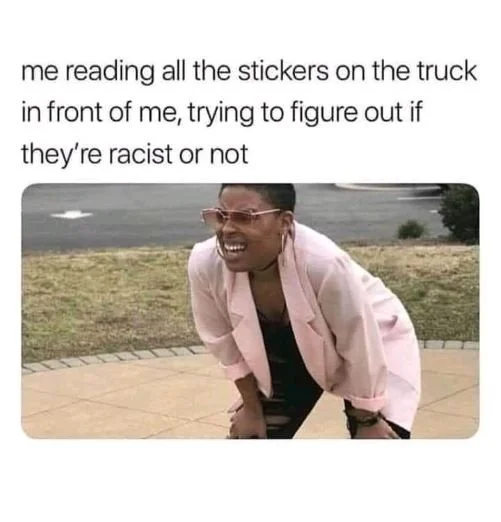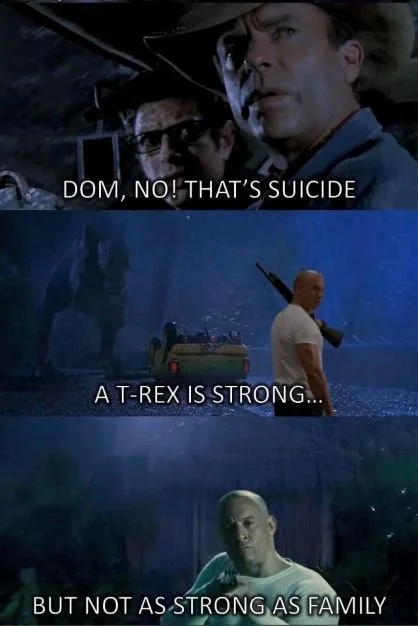The Meme-ification of Movies
Some Background on Memes
Maybe it’s because I haven’t gone out much recently – or because my sense of humor is incredibly refined – but if you were to take a casual scroll through my camera roll you’d see an alarmingly high number of memes. The word “meme” has actually been around since 1976, when evolutionary biologist Richard Dawkins coined the term in his book The Selfish Gene to describe a unit of cultural information spread by imitation. What counts as memes nowadays are images, videos, or other types of content that are easy to customize and share with others online, usually to make them laugh.
The memes that we enjoy the most speak to us on some personal or collective level; whether in the image and/or caption, any element that we have a connection amplifies our response. This explains why memes that address topics like coping with the pandemic, procrastinating doing something important until the last minute, or even the tragedy of Harambe’s passing are circulated so frequently in so many variations: we’re all in on the joke. And because “Both inside jokes and memes are community- and culture-forming since they rely on a communal experience through their establishment of a point of shared knowledge and friendly association,” getting the joke can make us feel like we’re part of a broader community as well.
Movie Memes
When it comes to movie memes, I’d argue that a big part of enjoying them comes from understanding their source material. For example, the most common movie memes I see replace a piece of dialogue with a more comical version while still keeping the dialogue’s original structure intact. Take this meme of a conversation between Anakin and Padme from Star Wars: Episode II - Attack of the Clones.
While a fair portion of people – including myself – would be hard-pressed to recite the lines of the original conversation, you can still observe its broad strokes in the meme: Anakin says what on face value appears to be an innocent observation, a cheerful Padme asks a simple clarifying question, Anakin stares back unresponsive, and a now concerned Padme probes further. There isn’t any rule demanding that this condition hold for such movie memes – there are undoubtedly many exceptions – but inserting a conversation that ignores the original’s structure would feel off. Thus, the people who can understand the joke on multiple levels have already watched the movie. This is especially true for those more obscure movie memes that are entirely visual. If you haven't watched the movie you may still get a chuckle from the meme, but you’ll still be missing an important piece of info and may feel left out of the conversation. Again we can see how those who have already watched the film are likely to get a bigger laugh because they understand what the visual’s “joking” about.
For more proof that background knowledge leads to greater enjoyment of a movie meme, look no further than film TikTok. Here you can find numerous sketches where creators poke fun at a film by either delivering their own comical rendition of a scene or placing a movie character/event in a funnier setting. A big point of differentiation between TikTok videos and “traditional” memes is how TikTokers must already have watched the movie they’re making fun of; they can’t rely on something like a meme generator to create their content. Given this fact, users unfamiliar with a movie may be confused when they watch a TikTok video about it since it’s geared primarily towards people who’ve seen the movie already. So similar to looking at an obscure movie meme, unfamiliarity with a TikTok video’s source material is a barrier for people who’d like to get in on the joke.
Your Point?
Where I’m getting at is memes can act as catalysts for getting people to watch new movies. When a person stumbles across a meme of a movie they haven’t heard of, like a trailer it gives them a taste of the film. And the more memes about a particular movie are circulated around the internet, the more likely it is that other people will watch the film to feel part of the conversation. Take the surprising success of Netflix’s 2018 release Birdbox, which was viewed on more than 45 million accounts within the first week of its release. Despite fairly abysmal reviews, the onslaught of memes created and shared provided many would-be-non-watchers with a reason to check out the film.
According to one viewer interviewed by The Ringer, “I figured that I just about got the gist of the joke, visual memes are largely self-explanatory. But there was just so many of them, and they seemed so versatile, so I ultimately decided to watch the movie to make sure I wasn’t missing any nuance.” Or consider Squid Game, whose success can partially be attributed to its high “memeability factor” (e.g., audio of the girl singing “Red light, green light 1, 2, 3!” in Korean had been used in more than 420,000 TikTok videos as of October 4, 2021). Even the results of a poll (no. of responses = 54) I ran on my Instagram show how memes can compel people to watch something new.
Potential Meme-iplications
I’ll admit that nothing I’ve said so far has been shocking, but it’s still interesting to consider the possible implications of our interactions with movie memes on the way we consume and discuss film.
For one, memes can become a much more mainstream form of internet film discourse. Instead of posting long Twitter threads analyzing one element of a movie or discussing a particular scene in the comments section of an Instagram post, people may choose to get their points across using simple visuals and (optional) clever captions more often. Doing so would allow them to get their ideas across faster and more clearly, as well as be creative with how they frame their views.
On the flip side, it could become more common for memes to outshine the movies upon which they’re based. Take the abundance of Shrek and Mike Wazowski (Monsters Inc.) memes, for instance.
These memes have become so divorced from their respective source material that there’s no need even to watch them because there’s no inside joke to get in on. And don’t get me started on the TikTok trends of reducing an iconic song from a movie’s soundtrack to background noise, or stripping out an important piece of dialogue to lip-sync with. Obviously I’m not suggesting that the separation between movie and meme will lead to some grave perversion of culture. At the same time, I wonder whether such trends may shift many people’s perceptions of movies so that they view them as primarily secular content instead of art – at least for those films that are going for a more artistic feel.
Lastly, memes may be the path forward for running successful viral movie marketing campaigns. Given the prominence of cord-cutting and everyone’s desire to skip ads on streaming platforms, movie trailers and talk show appearances may soon not be enough to grab most people’s attention, especially that of young people. Movie studios will have to meet us where we are and speak our language: giving us memes to laugh at and share on social media to (inadvertently) promote their projects. Although various brands have started experimenting with “meme marketing”, the only movie studio that’s done the same successfully has been Universal Pictures – in collaboration with Beats by Dre – for their 2015 hit Straight Outta Compton. Only time will tell whether those movie studios that can’t rely on the built-in audience a juggernaut franchise maintains will get with the times or end up as insignificant as those god-awful F9 memes.





